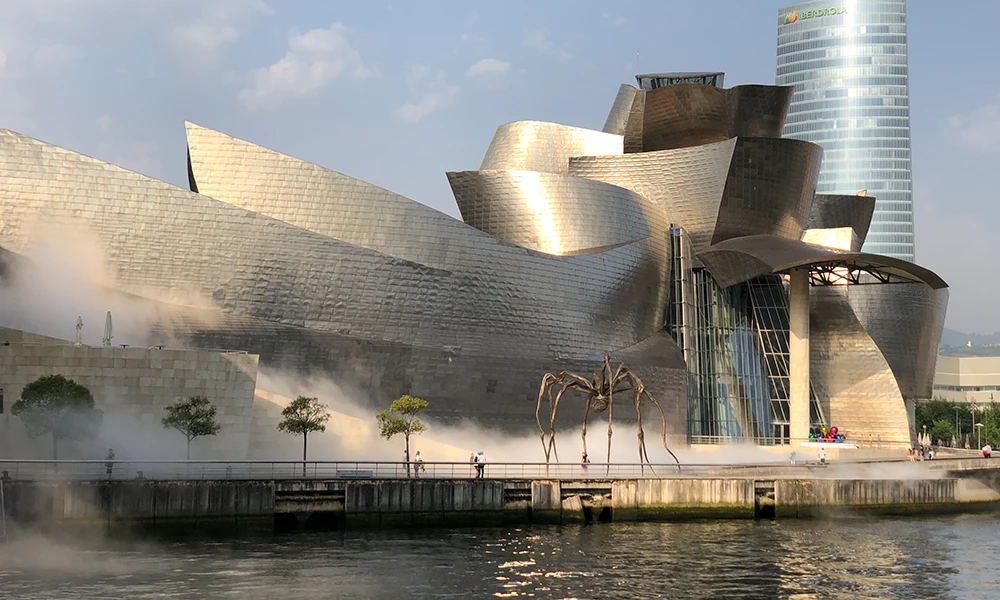
Canadian/US architect Frank Gehry has a unique and playful approach to deconstructivism. We show you six spectacular buildings from a 50-year creative period.
Frank Gehry buildings are spectacular and unusual. Broken geometries, uneven corners, walls that appear convex, and unusual materials such as corrugated iron and plywood are all characteristic of his designs, which are prime examples of deconstructivism. Frank Gehry buildings blur the line between art and architecture.
1. The Guggenheim Museum in Bilbao
One of the Frank Gehry buildings that made the architect famous is the Guggenheim Museum in Bilbao, northern Spain. The museum of modern art, which opened in 1997, remains to this day an icon of deconstructivism. The building, which is oval at its core, is located on the Nervión River and gets its sculptural appearance from the use of an outer skin made of titanium, sand-lime brick and glass. Spread over 11,000 square metres of exhibition space are 19 galleries of contemporary art, whose design language makes them easily identifiable from the outside. Gehry himself says that the construction of the Guggenheim Museum, which took four years to complete, was one of the most important beacons of his creative life.

2. Frank Gehry’s Walt Disney Concert Hall in Los Angeles
Architectural deconstructivism's unmistakeable collage-like character was retained by Frank Gehry when the Walt Disney Concert Hall was built in Los Angeles. Completed in 2003, the building is a memorial to Lillian B. Disney’s late husband Walt Disney, who had a long-standing association with the venue. Gehry’s vision for the new concert hall was a living room for the city where people could feel at home. Covering an area of 2,140 square metres and seating 2,265 visitors, this stainless steel marvel is reminiscent of a sailing ship. Another special architectural feature: the outer walls seem to stretch from the inside to the outside.
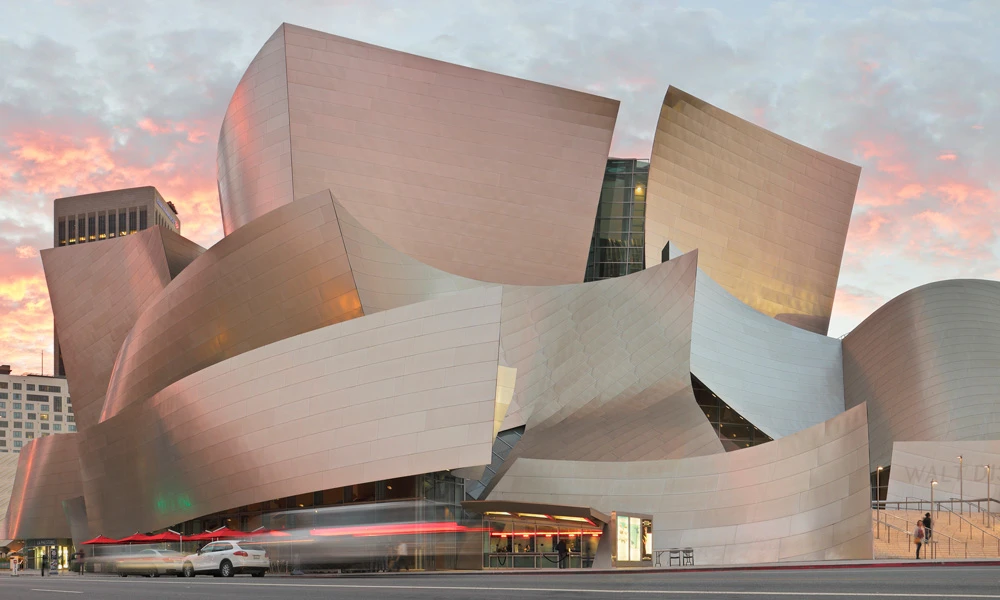
3. Vitra Design Museum in Weil am Rhein
Extraordinary furniture design needs a suitable setting, as can be seen in the Vitra Design Museum in Weil am Rhein, one of the world’s leading design museums and at the same time Gehry’s first building in Europe. Frank Gehry designed both the museum and the administrative building here. The sculptural shell, made of white plaster and titanium zinc, appears almost unusually sober. In addition to Frank Gehry’s building, other designs by great architects can be found on the Vitra grounds – for example the fire station by late celebrated architect Zaha Hadid, who also embraced the deconstructivist style. In her later years, she mainly designed buildings using curvaceous forms, earning her the title ‘Queen of the Curve’.
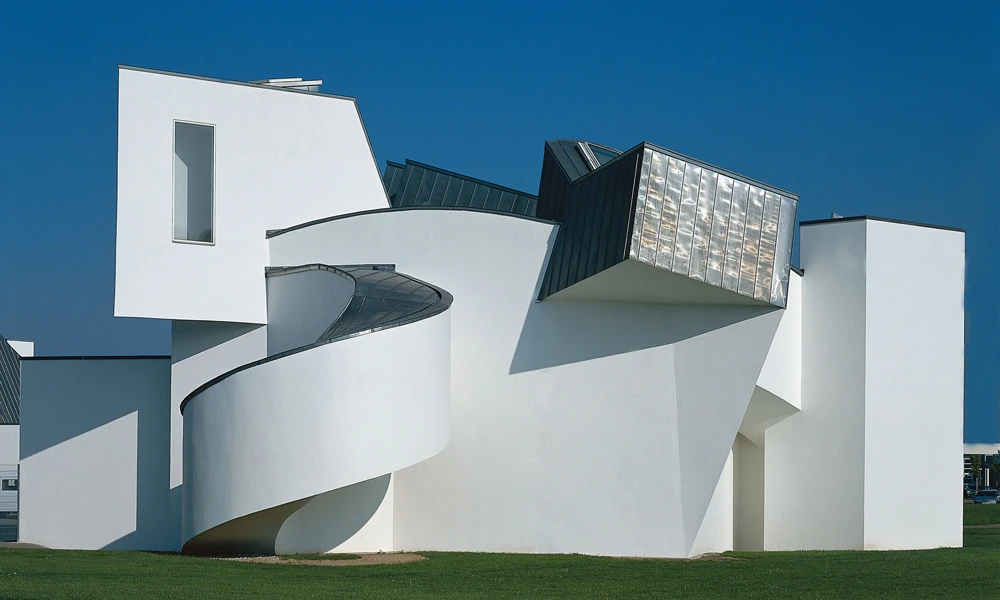
4. Frank Gehry building in Prague: The Dancing House
The Dancing House in Prague, which is located in the historic centre of the city, highlights the extent to which Gehry’s use of deconstructivist forms is seen as controversial around the world. The building stands in stark contrast to major sights such as Charles Bridge, St. Vitus Cathedral and Old Town Square.
The building by Frank Gehry and Vlado Milunic, which was completed in 1996, is called ‘Ginger and Fred’ by locals – a reference to Ginger Rogers and Fred Astaire, who provided the inspiration for the two leaning corner towers that clearly represent a dancing couple. Unaligned windows, curved concrete stilts and the undulating shape of the building are classic features of the Dancing House. Another interesting aspect is that the two sections of the building are not connected anywhere inside. Today, the new building has found its place amid time-honoured buildings and is a popular sightseeing destination.
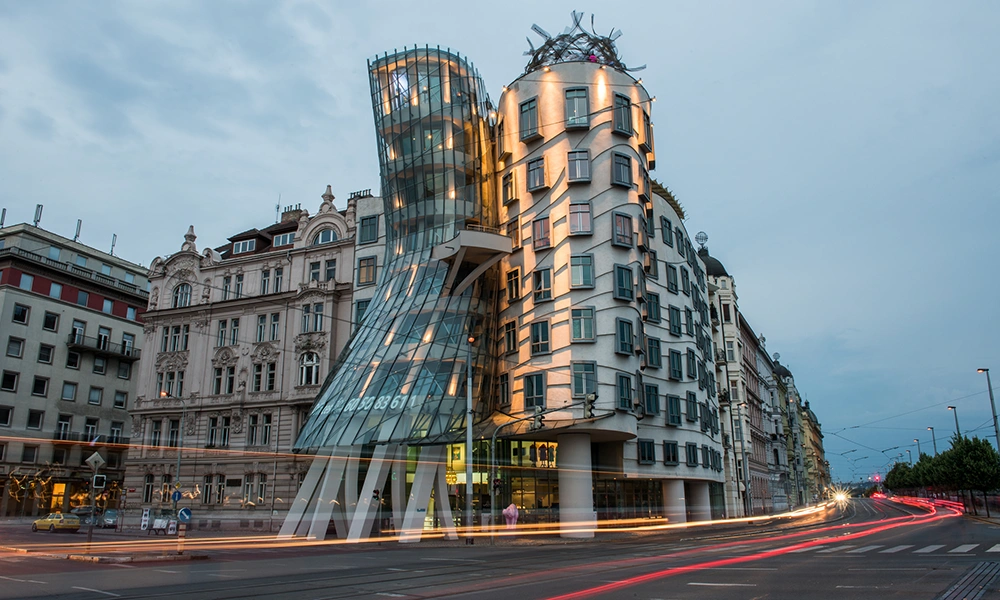
5. Frank Gehry buildings in Germany: Neuer Zollhof in Düsseldorf
Gehry also advances the idea of sculptural buildings in his design of the Neuer Zollhof in Düsseldorf. The 2003 building is part of the redevelopment of the Rhine harbour, where other architects besides Gehry, such as David Chipperfield and Steven Holl, have projects underway. Gehry’s structure consists of three buildings forming a single unit through their deconstructivist style, yet differing in their execution and form. Different materials were chosen for the design, with the building in the centre deliberately made of stainless steel so that the other two are reflected in the façade. The Gehry buildings in the Media Harbour have become a major draw for visitors and are among the most photographed structures in the Rhine metropolis.
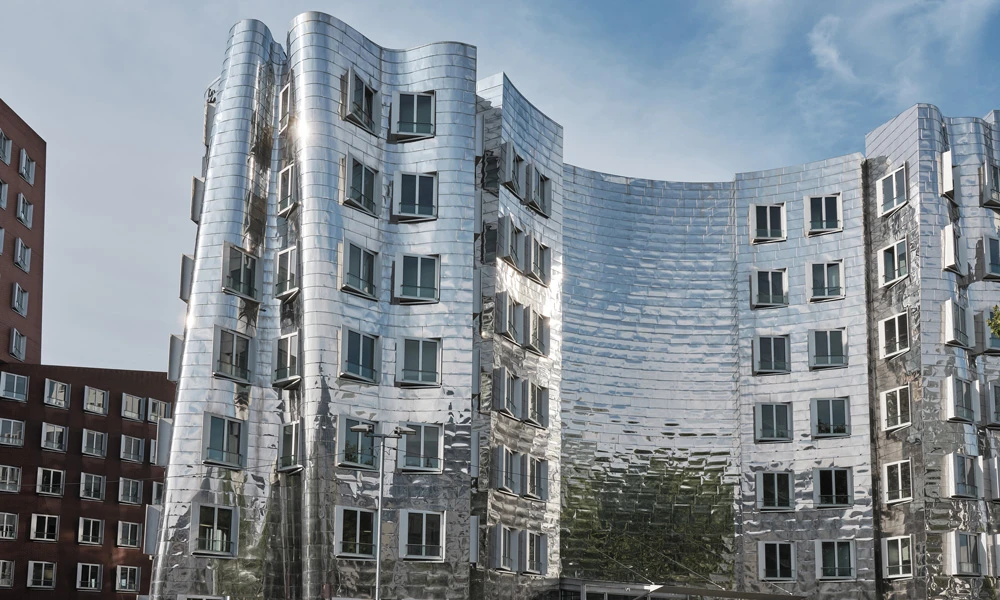
6. Arles: LUMA art and cultural centre
A total of 11,000 aluminium panels adorn the 56-metre-high exhibition tower at the new Luma art and cultural centre in Arles. Visible for miles around, the tower rises from a cylindrical glass base and reaches towards the sky. Mirrored glass window boxes punctuate the aluminium façade, reflecting the surroundings and offering visitors beautiful views.
For the structure, Gehry looked to the city’s history: the base is inspired by the Roman amphitheatre in Arles, and the tower is meant to recall ‘Starry Night’, painted by Vincent van Gogh in 1889. The centre opened in June 2021.

Frank Gehry’s deconstructivist buildings turn heads all over the world and make a lasting impression on visitors. As many of his buildings are open to the public, for example as museums, architecture fans can enjoy Gehry’s buildings in person as an immersive experience.